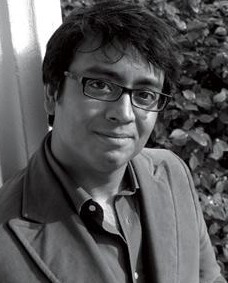Zia Haider Rahman’s first novel, In the Light of What We Know, is already the literary event of the year (reviewed in Open, ‘A Groundbreaking Work of Staggering Genius’, 23 June 2014). Born in Bangladesh and educated at Oxford, Cambridge and Yale, Rahman has worked as an investment banker and human rights lawyer.
S Prasannarajan in Open:
As a writer, you hold the world in your palm and play with it. Are you drawn to the novel as a form because of the freedom that it alone gives you?
There are few venues that offer the scope to explore the phenomena of experience and consciousness afforded by the art of the novel. I believe that the novel remains the pre-eminent form for a certain kind of enquiry.
Ideas, from philosophy to politics to mathematics, replace action in this novel, seldom seen in novels from the East. Am I right?
 I wouldn’t presume to comment on what is (or isn’t) seldom seen in novels from the East. But to take your substantive point, I understand what you’re getting at though I would have to reframe it slightly. There’s a lot of action in this novel, ranging from walks in the leafy squares of Bloomsbury in London and boat rides off Manhattan island to train crashes in Sylhet and bomb explosions in Kabul. But what you’re noting is that there’s also a lot that is discussed, in the way that two men—both approaching middle-age, both of a certain education, both at pivotal moments in their lives— might discuss things if freed from quotidian claims. In the age of Twitter and Facebook, of soundbites and the frenetically simplifying accounts of an ever more complex social environment, these two men have been granted a space in which to slow down.
I wouldn’t presume to comment on what is (or isn’t) seldom seen in novels from the East. But to take your substantive point, I understand what you’re getting at though I would have to reframe it slightly. There’s a lot of action in this novel, ranging from walks in the leafy squares of Bloomsbury in London and boat rides off Manhattan island to train crashes in Sylhet and bomb explosions in Kabul. But what you’re noting is that there’s also a lot that is discussed, in the way that two men—both approaching middle-age, both of a certain education, both at pivotal moments in their lives— might discuss things if freed from quotidian claims. In the age of Twitter and Facebook, of soundbites and the frenetically simplifying accounts of an ever more complex social environment, these two men have been granted a space in which to slow down.
Consider an American president’s decision to take his country to war. What the media will slant us towards is the action of the battlefield, which is where the images are. But think of the drama that took place in the lead-up to the decision. The state department at loggerheads with the defense department; junior analysts at the CIA resigning noisily over the willful blindness of their superiors. All action is predicated on a drama, sometimes a struggle in itself, played out in thoughts and ideas, in the things we think we know.
Many of the novels that have left an enduring mark on me have not shied away from exploring the life of the mind, directly or indirectly. Sebald’s novels are an obvious example, but there are many other works too, not so readily detectable in similarities of style but whose influence has been, I think, on my perception of what fiction is capable of doing. Thomas Mann’s Doctor Faustus combines ‘action,’ as you put it, with ideas, or the actions of the mind. Our beliefs are what animate us and without them we would be lifeless.
More here.
